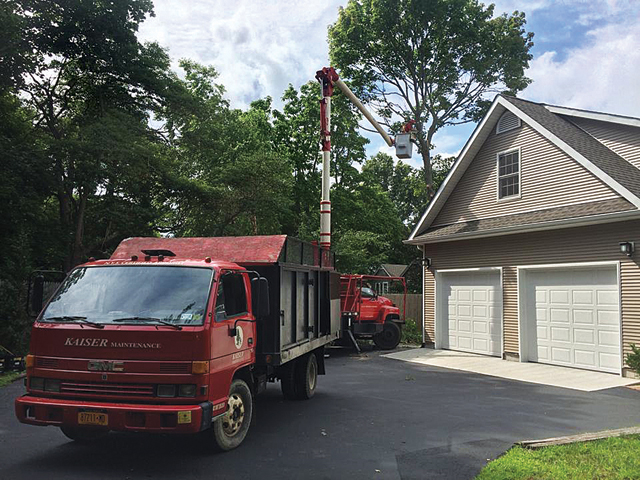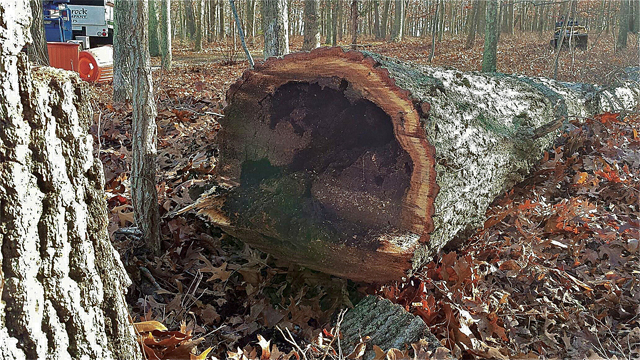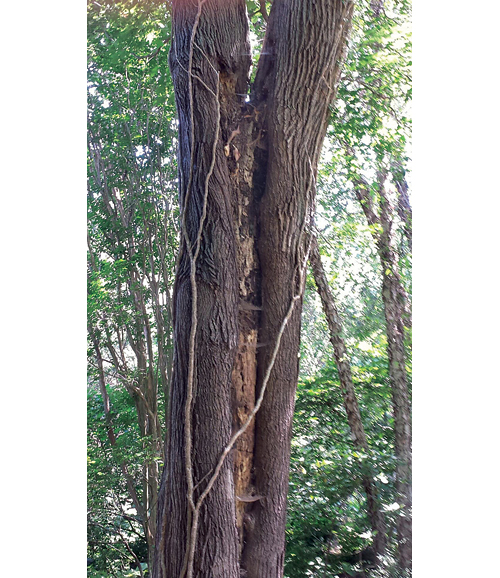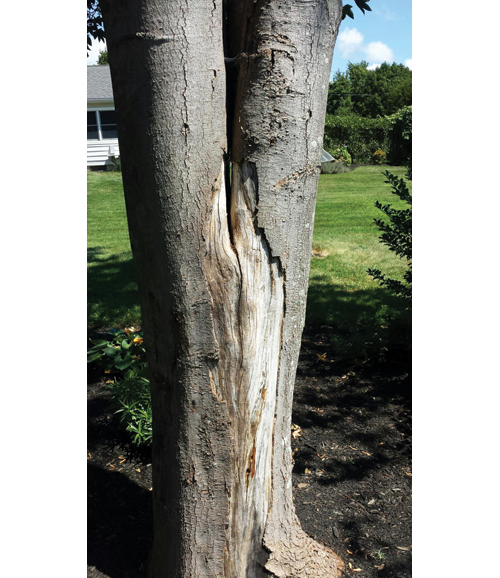Real Estate: During storm season, trees need extra protection


Arborists, Larry Kaiser remarked recently, have a saying: “Look up.”
It’s easy enough for someone to examine a fallen branch once it comes crashing down on their lawn following a storm, Mr. Kaiser explained, but homeowners often don’t think to inspect the health of their trees when they’re still standing.
But “looking up,” said Mr. Kaiser, who owns the Jamesport landscape management company Kaiser Maintenance, just might prevent that maple or elm in your backyard from falling in the first place.
“You can see if some branches are cracked,” added Wayne Mott of Mott’s Tree Service & Landscaping in Cutchogue. “Sometimes you can see big holes in the trees that birds and squirrels are going inside of. That’s a weak spot and it has to be addressed.”
Consider the following tips a sort of “owner’s manual” for trees.
Don’t wait until the last minute
“People wait until a hurricane starts brewing in the Atlantic and then they start calling,” Mr. Mott lamented with a laugh. “And they call all at once! It’s a little too late.”
If you’re concerned about a tree on your property, call a certified arborist right away, added Mr. Kaiser.
“We can diagnose whether it’s an insect [problem], disease or nutrient deficiency,” he said. “I get calls saying ‘My tree is half dead, what should I do?’ Unfortunately I should have gotten that phone call six months, a year ago.”

Hire someone who knows what they’re doing
“A lot of damage we see during storms is from improper pruning techniques,” said Jonathan Shipman, a certified master arborist at Shamrock Christmas Tree Farm in Mattituck. “When a company comes in and thins out the entire inside of a tree, it’s called ‘lion-tailing.’ That makes the branches more prone to damage in windstorms.”
Also keep in mind that “watchful waiting” might be the best prescription for certain trees.
“There are plenty of guys out there with chain saws and chippers, but not everyone has the training to be a certified arborist,” Mr. Kaiser said.

Get your trees pruned and thinned regularly
Proper pruning and thinning “always makes a huge difference,” Mr. Shipman said. “If a tree has a very dense canopy, you can thin it out.”
Depending on the species, Mr. Kaiser said, trees require pruning every three to five years. Maples, for instance, grow quickly and should be pruned every three years. Oaks, on the other hand, can go up to five years.
Some trees, like black locusts, grow “too tall” and may need to be shortened periodically so that strong winds can’t blow them over in a storm, Mr. Mott added.

Be proactive
A tree might look healthy to the naked eye, but its center can tell a radically different story, Mr. Kaiser said. Carpenter ants like to feast on oaks in particular.
“We’ve seen oaks that look great on the outside but the center is hollowed out by carpenter ants,” he said.
In cases like this, it might make more sense to chop down the tree altogether.
“A lot of people don’t want to remove them because they like trees, but sometimes they have to go,” Mr. Mott said.
Photo Caption (top photo): A Kaiser Maintenance employee works on a tree at an Orient home last month. According to company owner Larry Kaiser, having your trees thinned and pruned regularly is a good way to protect them from storm damage. (Credit: Larry Kaiser)







